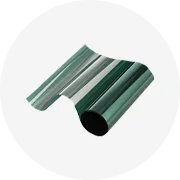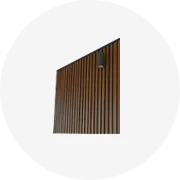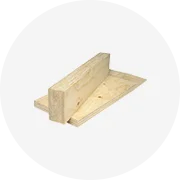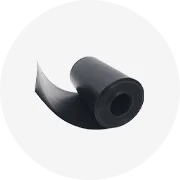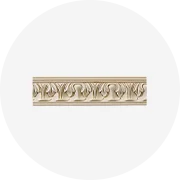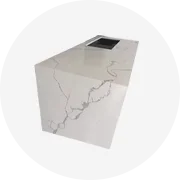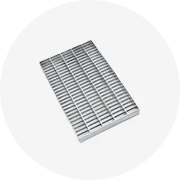Types of Floating Deck Blocks
Floating deck blocks (also known as deck support blocks) are essential components for constructing elevated decks that aren't attached to any building or structure. These blocks create a stable, level foundation by supporting the deck joists while keeping the structure elevated above ground level.
Expert Tip: Floating decks are particularly useful in areas where building permits might be required for attached structures, as they often don't require permits due to their non-permanent nature.
Concrete Deck Blocks
The most widely used type due to their excellent stability and durability. These heavy-duty blocks provide a solid foundation that withstands harsh weather conditions without warping or rotting.
Best for: Long-term installations, heavy-duty applications, and permanent structures
Wooden Deck Blocks
Made from pressure-treated lumber, these lightweight blocks offer a natural aesthetic that blends well with outdoor environments. Ideal for smaller decks where weight and portability are concerns.
Best for: Natural aesthetics, small projects, and temporary installations
Note: More susceptible to rot and insect damage than other materials
Adjustable Deck Blocks
Feature height adjustment mechanisms that allow for precise leveling on uneven ground or sloped surfaces. These blocks significantly simplify construction while enhancing overall deck stability.
Best for: Uneven terrain, sloped yards, and projects requiring precise leveling
Plastic Deck Blocks
Manufactured from recycled plastic, these lightweight blocks resist corrosion, insects, and harsh weather. Their affordability and durability make them particularly suitable for decks near water bodies.
Best for: Waterside installations, budget-conscious projects, and DIY builders
Steel Deck Blocks
Constructed from galvanized steel, these blocks provide exceptional strength and durability. Their high load-bearing capacity makes them ideal for commercial applications and heavy-duty requirements.
Best for: Commercial decks, high load-bearing needs, and professional installations
Aluminum Deck Blocks
An emerging solution combining lightweight properties with corrosion resistance. These blocks offer a modern, sleek appearance suitable for contemporary deck designs.
Best for: Modern aesthetics, corrosion-prone environments, and weight-sensitive applications
| Block Type | Weight | Durability | Cost | Best Application |
|---|---|---|---|---|
| Concrete | Heavy | Excellent | Medium | Permanent, heavy-duty decks |
| Wooden | Medium | Fair | Low | Small, temporary decks |
| Adjustable | Varies | Good | High | Uneven terrain installations |
| Plastic | Light | Good | Low | Waterside decks, DIY projects |
| Steel | Heavy | Excellent | High | Commercial applications |
| Aluminum | Light | Very Good | Medium-High | Modern designs, coastal areas |
Specifications and Maintenance of Floating Deck Blocks
Manufacturers produce floating deck blocks with varying specifications to accommodate different construction requirements. Understanding these specifications is crucial for selecting the right blocks for your specific project.
Weight Capacity
Different blocks are designed with varying load-bearing capabilities to accommodate specific purposes:
- Light-duty blocks: 500-800 lbs per block (walkways, small seating areas)
- Medium-duty blocks: 800-1,200 lbs per block (standard residential decks)
- Heavy-duty blocks: 1,200+ lbs per block (large decks, hot tubs, heavy furniture)
Dimensions
Block sizes vary to support different deck structures:
- Standard sizes: 7"x11", 8"x8", 12"x12"
- Height ranges: 4"-12" (standard), up to 18" (adjustable models)
- Larger dimensions provide better stability and weight distribution
- Smaller blocks may be used for tighter spacing requirements
Material Properties
Each material offers distinct advantages:
- Concrete: High durability, weather-resistant, 20+ year lifespan
- Plastic: Lightweight (5-10 lbs), rot-proof, 15+ year lifespan
- Steel: Superior strength, rust-resistant with proper coating
- Aluminum: Corrosion-resistant, lightweight, modern appearance
- Wood: Natural aesthetics, 5-10 year lifespan with proper treatment
Design Features
Blocks incorporate various features to enhance functionality:
- Pre-formed joist slots for secure beam placement
- Textured surfaces to prevent slippage
- Hollow cores for water drainage and weight reduction
- Interlocking systems for additional stability
- UV protection (plastic varieties) to prevent degradation
Load Distribution
Effective weight distribution is critical for deck stability:
- Wider footprint designs spread weight more effectively
- Center-reinforced blocks provide better structural support
- Engineered blocks include load-dispersion technology
- Professional-grade blocks feature calculated weight distribution patterns
Adjustability
Some blocks offer height customization features:
- Fixed blocks maintain consistent height
- Semi-adjustable blocks allow for limited height changes (1"-2")
- Fully adjustable blocks offer 4"-8" height ranges
- Precision-adjustable models include millimeter-level adjustment capability
- Stackable designs for maximum height flexibility
Essential Maintenance Requirements
- Regular Inspection: Examine blocks quarterly for cracks, shifts, or settling. Pay special attention after severe weather events.
- Cleaning Protocol: Clean blocks annually with appropriate cleaners:
- Concrete: Mild detergent and stiff brush
- Plastic: Warm soapy water
- Metal: Rust-inhibiting cleaner
- Wood: Gentle wood cleaner and preservative
- Level Checking: Verify deck levelness biannually using a carpenter's level. Address any discrepancies promptly by adjusting or replacing blocks.
- Seasonal Preparation:
- Winter: Clear snow and ice to prevent freeze-thaw damage
- Spring: Check for winter damage and reposition if ground has shifted
- Summer: Inspect for insect infestation around wooden components
- Fall: Clear debris from underneath to prevent moisture retention
- Preventative Measures: Trim vegetation around deck, apply water-repellent sealants to appropriate blocks, and maintain proper drainage around the deck perimeter.
Important: Never exceed the manufacturer's specified weight capacity for your floating deck blocks. Doing so can lead to structural failure, potential injury, and property damage.
How to Choose Floating Deck Blocks
Selecting the appropriate floating deck blocks requires careful consideration of several critical factors to ensure safety, durability, and functionality of your deck project.
Weight Capacity Assessment
Calculate your deck's total weight load including:
- Structural materials (joists, decking, railings)
- Furniture, planters, and decorative elements
- Maximum occupancy (people and pets)
- Potential environmental loads (snow accumulation)
Safety recommendation: Choose blocks rated for at least 20-25% more than your calculated maximum load.
Material Selection Criteria
Different materials offer unique benefits:
- Concrete: Maximum stability, durability, and weather resistance
- Plastic: Lightweight, easy installation, and corrosion resistance
- Wood: Natural aesthetics, cost-effective, but requires maintenance
- Metal: High strength-to-weight ratio and modern appearance
Climate consideration: Select materials appropriate for your local weather conditions.
Adjustability Requirements
Evaluate your terrain and project needs:
- Level ground: Standard fixed blocks may suffice
- Slight slopes (1-3°): Semi-adjustable blocks recommended
- Moderate slopes (3-8°): Fully adjustable blocks necessary
- Significant terrain variations: Professional-grade adjustable systems required
Installation tip: Adjustable blocks simplify leveling but typically cost 30-50% more than fixed blocks.
Corrosion Resistance
Environmental factors affecting block selection:
- Coastal/saltwater proximity: Choose aluminum, plastic, or specially treated concrete
- High humidity areas: Avoid untreated wood or standard steel options
- Chemical exposure (pools, hot tubs): Select chemically resistant materials
- Freeze-thaw cycles: Choose crack-resistant concrete formulations
Security Features
Consider stabilization requirements:
- Anchoring options for high-wind areas
- Interlocking or connecting mechanisms between blocks
- Ground penetration spikes for additional stability
- Heavy-based designs for natural weight anchoring
Wind zone consideration: Areas with high winds require additional security measures.
Environmental Impact
Sustainability considerations:
- Recycled content percentage in manufactured blocks
- Local sourcing to reduce transportation footprint
- End-of-life recyclability options
- Eco-friendly manufacturing certifications
- Permeable designs that allow natural water flow
Budget Considerations
Cost analysis for your project:
| Block Type | Price Range (per block) | Installation Complexity | Maintenance Cost | Lifespan Value |
|---|---|---|---|---|
| Concrete Standard | $7-$15 | Medium (heavy) | Low | Excellent (20+ years) |
| Plastic Standard | $6-$12 | Easy | Low | Good (15+ years) |
| Wood Treated | $5-$10 | Easy | High | Fair (5-10 years) |
| Adjustable Basic | $15-$25 | Medium | Medium | Good (15+ years) |
| Adjustable Premium | $25-$40 | Complex | Medium | Excellent (20+ years) |
| Metal (Steel/Aluminum) | $20-$35 | Medium | Low-Medium | Very Good (15-20 years) |
Value tip: Consider the total cost of ownership (initial cost + maintenance + expected lifespan) rather than just purchase price.
Expert Advice: For optimal results, consider purchasing blocks from the same manufacturer to ensure consistent quality, compatible connections, and uniform load-bearing capabilities across your entire deck structure.
How to DIY and Replace Floating Deck Blocks
Replacing or installing floating deck blocks is a manageable DIY project that can extend the life of your deck while ensuring stability and safety. Follow this comprehensive step-by-step guide for successful results.
Essential Tools and Materials
- Carpenter's level (4-foot recommended)
- Measuring tape
- Shovel and garden rake
- Gravel or crushed stone (for drainage)
- Replacement deck blocks
- Rubber mallet
- Landscape fabric (optional, to prevent weed growth)
- String and stakes (for layout marking)
- Work gloves and safety glasses
Step-by-Step Replacement Process
-
Inspect the Existing Deck
Walk the entire deck surface, noting any areas that feel unstable, bouncy, or uneven. Mark problem spots with chalk or tape. Pay special attention to corners and areas supporting heavy items.
-
Determine the Underlying Cause
Carefully lift affected deck sections to examine blocks underneath. Look for cracks, settling, water damage, or soil erosion. Document the exact placement of joists and support beams before disassembly.
-
Prepare the Work Area
Remove decking boards and joists to access the problematic blocks. Set aside salvageable materials. Clear away vegetation, debris, and organic matter from around the existing blocks.
-
Address the Foundation
Excavate 2-4 inches of soil where blocks will be placed. Create a level base larger than the block dimensions. Add 1-2 inches of compacted gravel to improve drainage and stability. Consider adding landscape fabric to prevent weed growth.
-
Position New Blocks
Place replacement blocks on the prepared gravel base. Use a level to ensure each block is perfectly horizontal in all directions. For adjustable blocks, set to the appropriate height based on your deck design.
-
Check Spacing and Alignment
Verify that block spacing matches your deck design requirements (typically 16" or 24" on center). Use string lines between corner blocks to ensure perfect alignment. Blocks should form a precise grid pattern.
-
Test Weight Distribution
Before rebuilding the entire deck, place beams on the blocks and test with moderate weight. Observe any sinking or shifting. Make adjustments by adding or compacting more gravel beneath problem blocks.
-
Rebuild Deck Structure
Reinstall joists and beams according to your original layout, ensuring they sit properly in block notches or brackets. Secure connections according to manufacturer recommendations and building codes.
-
Final Inspection and Maintenance Plan
Perform a thorough final inspection, checking for level surfaces and stability throughout the deck. Document your installation with photos for future reference, and create a maintenance schedule.
Safety Warning: Always check local building codes before starting your deck project. While floating decks typically don't require permits for low-height installations, regulations vary by location. Additionally, call utility companies to mark underground lines before excavating.
Maintenance Reminder: Even the best deck blocks require periodic inspection and maintenance. Schedule bi-annual checks (spring and fall) to ensure your deck remains level, stable, and safe for years to come.
Frequently Asked Questions
The weight capacity of floating deck blocks varies significantly based on material and design. Concrete blocks typically support 1,000-1,500 pounds each, while plastic blocks generally range from 500-1,000 pounds per block. Metal blocks can support 1,200-2,000 pounds depending on construction.
For safety, distribute weight evenly across multiple blocks and never exceed the manufacturer's specified weight limits. When calculating load requirements, include the combined weight of the deck structure, furniture, occupants, and potential environmental loads like snow.
Yes, deck blocks can be effectively used on moderately uneven ground, which is one of their primary advantages over traditional foundations. For best results:
- Use adjustable deck blocks that offer height customization
- Create level pads of compacted gravel beneath each block
- Consider terracing for severely sloped areas (greater than 8-10 degrees)
- Use string lines during installation to ensure proper alignment
- Check for level in multiple directions at each block position
For extreme slopes, consult with a professional as additional engineering considerations may apply.
Floating deck blocks offer several distinct advantages over traditional post-and-beam foundations:
| Feature | Deck Blocks | Post-and-Beam |
|---|---|---|
| Installation Time | 4-8 hours (typical) | 1-3 days (requires concrete curing) |
| Permit Requirements | Often exempt (for low-height decks) | Typically required |
| DIY Difficulty | Beginner to Intermediate | Intermediate to Advanced |
| Adjustability | Can be repositioned if needed | Permanent once installed |
| Frost Heave Concerns | Minimal (floats with ground movement) | Significant (requires frost footings) |
| Maximum Load Capacity | Lower (suitable for residential use) | Higher (supports structural loads) |
Post-and-beam foundations remain superior for larger structures, permanent installations, and applications requiring maximum stability and weight capacity.
Yes, floating deck blocks can be effectively used for certain types of bridges and boardwalks, particularly in these scenarios:
- Low-traffic pedestrian bridges spanning small distances (under 8 feet)
- Garden and landscape walkways over shallow water features
- Temporary or seasonal boardwalks in protected areas
- Wetland observation platforms where minimal environmental impact is desired
However, for public bridges, longer spans, or structures over moving water, professional engineering is required, and traditional deep foundations are typically necessary to ensure structural integrity and safety.
Floating deck blocks can significantly reduce the environmental impact of your construction project through several mechanisms:
- Minimal Ground Disturbance: Unlike concrete footings, deck blocks don't require extensive excavation, preserving soil structure and reducing erosion
- Removable Installation: The non-permanent nature allows for complete removal and site restoration if needed
- Sustainable Materials: Many manufacturers now offer blocks made from recycled content (up to 100% in some plastic varieties)
- Natural Water Flow: Elevated design allows for natural water movement and drainage patterns to continue beneath the structure
- Reduced Equipment Usage: Installation typically requires only hand tools, eliminating the carbon footprint of heavy machinery
- Habitat Preservation: Minimal disruption to existing vegetation and microhabitats compared to traditional foundations
For maximum environmental benefit, look for blocks manufactured with eco-friendly processes and high recycled content percentages.
























































